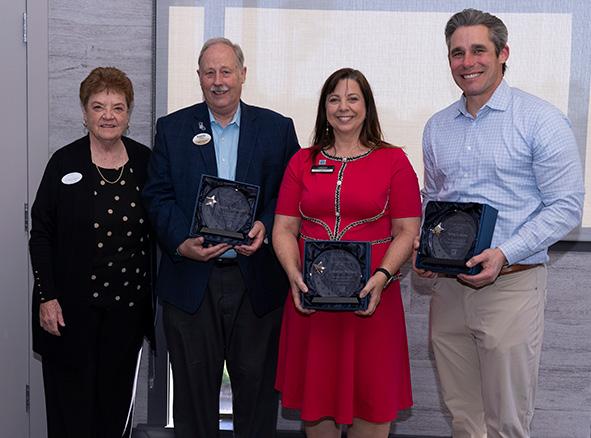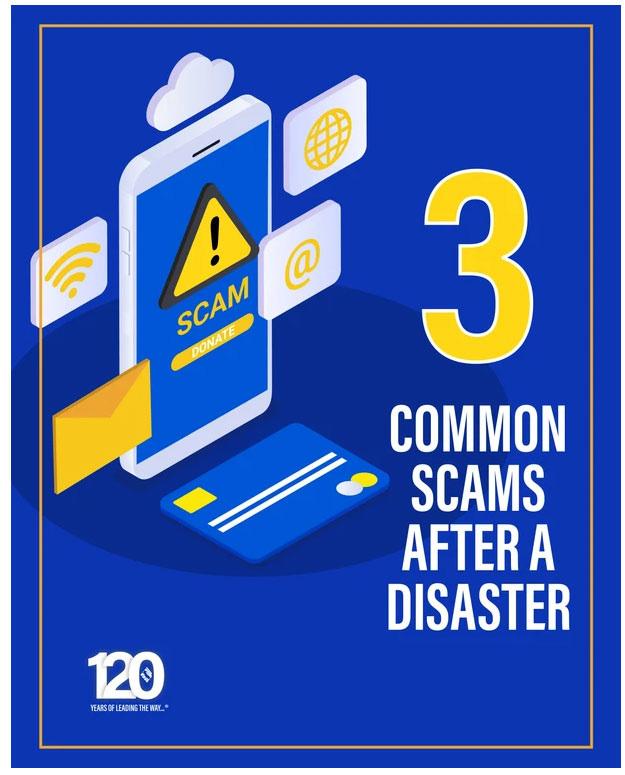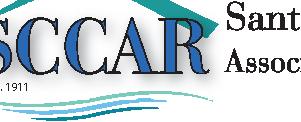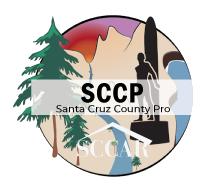






Renee Mello, President
Happy New Year! Can you believe it’s 2025? A quarter of the century is almost over. Remember how excited we were as we approached a new millennium? At the time the fear was that when clocks struck midnight on January 1, 2000, affected computer systems, unsure of the year, would fail to operate and cause massive power outages, transportation systems to shut down, and banks to close. Widespread chaos would ensue. Guess what – none of that happened and it was business as usual.
One could say that REALTORS® went through that same kind of fear last year. The Department of Justice filed a lawsuit against the National Association of REALTORS® (NAR) alleging that NAR established and enforced illegal restraints on the ways that REALTORS® compete. In May, the National Association of REALTORS® settled a series of class-action lawsuits alleging that its compensation rules, which forced selling agents to advertise compensation for buyer’s agents on listings, essentially amounted to antitrust, reducing competition and artificially inflating competition.
I can’t tell you how many times I heard that commissions were going away. The buyer’s agents were going away. The world of Real Estate, as we know it, was going away. Most will now agree that the world of Real Estate has not gone away and most REALTORS® are adjusting to the new ways of doing business. We are adaptable if nothing else. The thing that really concerns me is the general feeling that maybe we don’t need the local, state, and national associations. That is certainly not the case, and here is why.
Santa Cruz County Association of REALTORS® mission is “Fostering a collaborative community that enhances professionalism and integrity while advocating for home ownership, housing and private property rights.” The local association is where local issues are handled. We were instrumental in the defeat of the Rent Control initiative of 2018. And it looks like we may be having another encroachment on Property Rights that we will need to work to defeat this coming year. We offer education to further
enhance your skills, including a new agent boot camp helping our newer agents understand the business. We offer a committee that works with our MLS organization (MLS Committee) and one that includes the new members of our profession (MREP). And who doesn’t want to have fun? Our Events and Community Committee sponsor numerous activities that promote community and fun.
C.A.R. (California Association of REALTORS®) offers many activities that support us as REALTORS®. First and foremost is our zipForms™ which is offered free to members of C.A.R. Have a Legal or Financial question? C.A.R. is there for you.
C.A.R. is vigilant in following possible laws in our government that could affect private property rights and advocate for our homeowners. During the transition last year as a result of the lawsuit, CAR provided almost daily opportunities to
find out what was going on and the best way for REALTORS® to do business. The follow the trends in Real Estate and share the information with REALTORS®.
NAR (National Association of Realtors) is how we do business begins. It is the Code of Ethics that guides our activities as REALTORS®. We know what we can expect from a fellow REALTOR® as a fellow member of NAR. NAR is also where we can be trained in the niche are we may want to do business in, i.e., SRES (Senior Real Estate Specialist) or ABR (Accredited Buyer Representative), to name a few. All three of these organizations play a vital role in our success in our profession of choice, REALTOR®. The recent changes have caused some people to question their need for one or all these organizations. I feel if you truly understand what they each offer, you know that you need all three.

The energy at our 114th Installation & Awards Luncheon was incredible! We welcomed our new leaders, celebrated our outgoing ones, and honored some outstanding individuals in our community! Welcome to our 2025 Leadership Team – President Renee Mello, President Elect, Carol Lerno, Treasurer, Nick Bailey, Immediate Past President, Carol VanAusdal and our Directors: F. Carolina Portillo Franco, Greg Mann, Mary Thomas, Lauren Spencer, Pete Eubank, David Webb, Dana Sales and Maggie Barr.
Congratulations to award winners, Paul Bailey, Lifetime Achievement, Seb Frey & Kathy Oliver, REALTORS of the Year, Patrick Beaver, Affiliate of the Year and Loren Morse for Community Service We couldn’t make it happen without our sponsors, thank you Bailey Properties, Santa Cruz Lending, MLS Listings, Oliver Property Management, Pillar to Post, Local Shot, Tour Factory, Main Street Realtors, Best X Termite & Pest Control for your support!















Represents the differences within a group or organization, such as race, ethnicity, gender, sexual orientation, age, disability, and more
Involves recognizing that inequalities exist and ensuring that everyone has an equal opportunity to succeed. This can include allocating resources and decision-making authority to groups that have been historically disadvantage
Involves creating a culture where differences are expected and welcomed, and where everyone feels a sense of belonging. This includes valuing and supporting diverse individuals and groups for their unique perspectives and contributions.
“Diversity
is having a seat at the table, inclusion is having a voice, and belonging is having that voice heard.”
– Liz Fosslien

Thank you to our Centennial Club members whose contribution of $197+, the true cost of doing business, to the REALTOR® Action Fund helps us protect private property rights and your ability to do business. To learn how you can be a club member, contact SCCAR.
Charles, Allen - Keller Williams Realty - SC
Steve, Allen - Allen Property Group
Amy, Bailey - Bailey Properties, Inc.
Joseph, Bailey - Bailey Properties, Inc.
Lisa, Bailey - Bailey Properties, Inc.
Nicholas, Bailey - Bailey Properties, Inc.
Paul, Bailey - Bailey Properties, Inc.
Robert, Bailey - Bailey Properties, Inc.
Margaret, Barr - Keller Williams Realty - SC
Tim, Bowers - Bailey Properties, Inc.
Candace, Bradfield - Bradfield & Associates
Judy M., Brose - C21 Real Estate Alliance
Paul, Burrowes - David Lyng Real Estate
Pete, Cullen - Bailey Properties, Inc.
Pamela, Easton - Sotheby’s International
John, Flaniken - Trade-In Real Estate
Sebastian, Frey - Compass
Lisa C., Gerety - Bailey Properties, Inc.
Sage, Goncharoff - Bailey Properties, Inc.
Russell, Gross - Russell E. Gross Real Estate
Kathy, Hartman - SCCAR
Danielle, Huff - Bailey Property Management
Sandy, Kaplan - Santa Cruz Properties
Datta S., Khalsa - Main Street REALTORS
Constance, Landes - Anderson Christie, Inc.
Neal, Langholz - Karon Properties
Geneva, Lawless - David Lyng Real Estate
Carol, Lerno - Main Street REALTORS
Gregory, Lukina - David Lyng Real Estate
Morgan, Lukina - David Lyng Real Estate
Randy, Maldonado - Cheshire-Rio Realty

Greg, Mann - Coldwell Banker Realty
Jennifer, Marini - Schooner Realty
Teresa, Marlow - Compass
Renee, Mello - Keller Williams Thrive
Antonio, Melo - Aldina Real Estate, Inc.
Candace, Noel - Bailey Properties, Inc.
Kathleen, Oliver - Oliver Property Mgmt.
Barbara J., Palmer - Bailey Properties, Inc.
Stephen, Pearson - Pearson Properties
Dana, Sales - C21 Real Estate Alliance
Rachel, Shaffer - Bailey Property Management
Sierra, Skipper - Bailey Property Management
Lynnette, Sousa - Aldina Real Estate, Inc.
Jynnette, Sousa-Melo - Aldina Real Estate, Inc.
Lauren, Spencer - Coldwell Banker Realty
Mary, Thomas - Bradfield & Associates
Joanne, Thompson - Bailey Properties, Inc.
Randy, Turnquist - C21 Real Estate Alliance
Carolyn, Wade - David Lyng Real Estate
Karen, Wade - Bailey Property Management
Jennifer, Watson - Christie’s Int’l R.E. Sereno
David, Webb - eXp Realty of California Inc
Richard, White - Bailey Properties, Inc.







Our committees are essential to SCCAR’s success. Thank you to these dedicated individuals for volunteering their time and expertise to help make SCCAR the best it can be!

Education Committee Chair, Jennifer Nielsen
Diversity, Equity and Inclusion Chair, Seb Frey
Committed to embracing diversity, equity and inclusion while fostering an environment where all SCCAR members feel welcome, supported, and valued regardless of their background. Through education and awareness, we aim to drive positive change and create a more inclusive Association that reflects and supports the diverse communities we serve.
Researches, plans and presents an annual agenda of industry-related seminars, events and/or workshops to meet the present and future needs of members working within the Association’s Strategic Plan.

Chair, Robin Ronzano
Plans and promotes a variety of projects and events for SCCAR member participation. Organizes and implements the SCCAR annual golf tournament fundraiser, enabling the Association to make various donations to community organizations

Chair, Randy Turnquist
Review complaints seeking disciplinary action in accordance with the C.A.R. procedures. Only SCCAR REALTORS® member in good standing can volunteer to serve.
Chair, Nick Bailey
LGR focuses on real estate-related issues and concerns affecting the real estate industry. Offers input on legislative matters, environmental and community issues that are of concern to property owners and REALTORS® with primary emphasis on local issues. Develops and maintains close relationships with legislators representing Santa Cruz County through frequent meetings and correspondence.


Chair, Bettsy Tyler
Works to improve products and services provided by MLS Listings, Inc.

Chair, Erin Davidson
MREP’s goal is to provide newer members in the real estate profession a platform to network and build relationships and increase awareness of SCCAR benefits and activities. MREP is a committee intended for REALTOR® members as a way to introduce them to organized real estate through Association involvement.

Chair, Candace Bradfield
Enforces the REALTOR® Code of Ethics by holding hearings of alleged violations. It is the role of the Professional Standards Committee to serve as panelists at disciplinary and arbitration hearings

Joining a committee is an invaluable opportunity to deepen your understanding of the Association’s operations, policies, and decision-making processes. It allows you to build meaningful connections with fellow members, fostering collaboration and professional growth. By contributing your unique skills and insights, you play a vital role in shaping the future of the Association while positively impacting the community it serves. We are accepting applications for our Education, Events & Community Relations, MLS and MREP Committees! Learn more here















This 5-part Training Series is perfect for new and seasoned agents, offering essential knowledge and confidence for a successful real estate career. Gain or refresh your skills with classes on Business Planning, Disclosures, Working with Buyers & Sellers, and Loan Fundamentals—all in one month!
• Feburary 5 & September 3
9 AM – 12 PM
Business Planning (1)
Instructor: Paul Bailey, Bailey Properties, Inc.
Topics: Time management, conquering accountability, where business comes from and developing your own Vision Statement
• February 7 & September 5
Fundamentals of Loans – From Prequalifying to Close (2)
9 AM – 12 PM
Instructors: Tai Boutell, Santa Cruz Lending Group and Matt Falconer, CrossCountry Mortgage
Topics:
Application to prequal to pre approval to approval, loan programs including ARM’s, and first time buyers, Interest rates, forecast/economic factors, Lender Lingo & insurance

• February 12 & September 10
Working with Buyers (3)
9 AM – 12 PM
Instructors: Pete Eubank, Room Real Estate
Topics: How to find buyers and what to do with them once you have one. Negotiation, lead gen, contracts, disclosures in practice and timelines.
• February 14 & September 12
Working with Sellers (4)
9 AM – 12 PM
Instructor: Greg Mann, Coldwell Banker Realty
Topics: Listing Agreement review, explain compensation, disclosures and contracts in practice, marketing and proper advertising. Listing presentations and value add (why should the choose you?)
• Feburary 19 & September 17
Disclosures & Contracts (5) 9 AM – 12 PM
Instructors: Robert Bailey, Bailey Properties, Inc. and Renee Mello, Keller Williams Realty
Topics: Over of the RPA (Residential Purchase Agreement) as it related to mandatory disclosures and contractual timeframes; specifically the Transfer Disclosure Statement (TDS) and Seller Property Questionnaire (SBQ).
Sign Up!
The series will be offered in February & September with 2 classes per week.
Pricing: Save and sign up for the whole series price for $110! Individual classes: $30






Register online @ mysccar.org or call 831-464-2000




Free with SCCP series
$20 for members
$30 for nonmembers
In light of the devastating res in Los Angeles, many of us are wondering if this could happen to our community once again. Learn how to prepare yourself, your family, and your neighborhood before a disaster strikes. Valuable tools and tips will be discussed with time for questions and answers.
Friday, February 28, 2025 9:30 - 11 AM via Zoom
Chris Gordon founder of GEODisclosure. Chris founded his NHD business, GeoDisclosure, in 2000 and has over 23 years of experience in Natural Hazard Disclosure reporting.


Wanda Vollmer is the Founder and CEO of Peace of Mind Preparedness, who provides education programs on disaster readiness for families and businesses on the Central Coast



No one thing prevents risk completely―the solution requires a system. Research has shown there are clear steps you can take to give your home a much better chance of surviving an encounter with wildfire. This guide provides four sets of steps that are grouped to provide the most impact for the time and cost involved. Get started today and be Wildfire Ready.
MAKE SURE YOUR ROOF IS FIRE-RATED Roofs are rated Class A to Class C based on their fire resistance with Class A providing the most protection from fire. Some roofs are not rated for protection against fires. If your roof is unrated, or if you are considering replacing your roof, re-roof with a Class A-rated roofing material.

Nearly all asphalt shingles currently on the market are Class A fire-rated. Three-quarters of all homes in the United States have a Class A asphalt shingle roof.
Clay and concrete tile roofs are Class A.
If you have a tile roof, bird-stop open ends of tiles at the roof edge to reduce vulnerability.
CREATE A BUFFER AROUND YOUR HOME
(0-5 FOOT HOME IGNITION ZONE)

Pay special attention to the 5 feet immediately around your home. This area should be designed and maintained to keep fire or embers from igniting materials in this area and spreading fire to your home.
Ensure yard debris and dead plant material does not accumulate in this zone.
Use hardscape like gravel, pavers, concrete, and other noncombustible mulch materials in this 5-foot zone around your home.
While best practice is to have no vegetation, choosing limited use of CalFire-recommended vegetation will keep your risk low.
Do not park boats, RVs, or other vehicles in this zone.
Do not store firewood, outdoor furniture, or other items such as trash cans, pet houses, lawn tools, children’s playsets, etc., in this zone.
Ensure that where the lowest 6 inches of the exterior wall meets the ground is covered with a noncombustible material such as brick, stone veneer, or exposed concrete of the foundation.
To prevent your deck from igniting and spreading fire to your home, do not use the area under decks as long-term storage.
It is best practice to store items long-term either indoors or at least 30 feet from the home if possible. It is also a good habit to avoid storing any items under your deck, even temporarily, and to consider this area as part of your home ignition zone.
If not possible, on days with Red Flag warnings (high fire danger), move any items temporarily stored beneath the deck―as well as outdoor furniture and other items that may be on top of your deck―indoors, into your garage, or at least 30 feet from your home (being mindful not to place them near your neighbor’s home). However, note that this is not ideal as it wastes valuable time if a fire develops near you and evacuation is necessary.
ADD
Flying embers can enter your home through vents in your attic, roof, gables, and crawlspace.

Install a metal screen 1/8 inch or finer either on the outside or inside to cover all vents to block embers from entering and igniting your home.
Be sure to check screens periodically and remove accumulated debris, birds’ nests, etc.
Once you’ve addressed the critical actions, keep going with these low-cost steps that further reduce REMOVE BACK-TO-BACK ROWS OF FENCING

If you and your neighbor have fences that overlap, this creates a small gap between the fences where debris and embers can accumulate and ignite both fences. Additionally, the two fences together create more fuel for a more intense fire, increasing your home’s exposure to heat and burning embers. Talk to your neighbor and work together to take down any sections that overlap.
REPLACE COMBUSTIBLE FENCING OR GATES ATTACHED TO THE HOME
If you have fencing attached to your home that is made of combustible materials such as wood or plastic, replace at least the first 5 feet with metal or other noncombustible versions (including replacing combustible gates attached to your home). This helps stop fire from spreading from the fence to your home.

If possible, choose open or lattice fencing or gates instead of solid privacy panels to allow embers to pass through rather than accumulate. This adds even more protection to the 0–5 foot home ignition zone.
Clear debris such as leaves and pine needles from your roof and in your gutters. Embers can easily start fires in these areas.
Make sure areas around fences and underneath gates are free of debris; this is another area where embers can collect.
Remove branches that may overhang your roof or gutters.
Trim the bottom of trees so that all branches are at least 6 feet from the ground and at least 3 times higher than any shrubs nearby.
Trim upper branches of trees to ensure they are at least 10 feet away from branches of neighboring trees.
Work with your neighbor to address trees near your property line that affect both properties.
If your deck sits less than 4 feet above the ground you will need to keep debris out and embers from collecting underneath.

Enclose it with a noncombustible material or use 1/8 inch or finer mesh.
When time and budget allow, these next steps will address additional vulnerable areas of your home.

Make sure small structures like sheds, dog houses, and other outbuildings are at least 30 feet away from your home. (Metal sheds are an exception.)
If they can’t be moved, consider retrofitting them with noncombustible materials or remove them completely.
Combustible structures within 30 feet of your home should be maintained just like the 0–5 foot home ignition zone.
If you have combustible siding like un-treated wood or vinyl, the best practice is to replace it with a noncombustible material like concrete-fiber board, stucco, brick, or stone veneer.

If you cannot replace all the siding, replace the lowest one foot of siding, ensuring the material extends below ground level, with brick or stone veneer and pay extra attention to the noncombustible home ignition zone. An exposed concrete foundation in the lowest foot provides similar risk reduction.

If your home has open eaves, box them in or install noncombustible soffit material, and install 1/8 inch or finer metal mesh in the vents. If fire reaches the area below an open eave, heat can build up and ignite exposed materials. Embers can also circulate here, increasing the chance they will enter your home if vents don’t have screens.
If you have a bay window on the ground level of your home, embers can collect and start fires in the area underneath. Heat from the resulting fire can then quickly build and spread fire to the wall.

Consider these final actions for reducing your risk.
When building a new deck, use metal joists and a fire-resistant walking surface like fire-rated composite deck materials, aluminum, or lightweight concrete.

Replace your windows with ones with tempered glass, especially first floor windows on a multi-story home.
In addition to tempered glass, vinyl-framed windows require reinforcing; therefore, if replacing windows with a vinyl frame, ensure the manufacturer is a member of the American Architectural Manufacturers Association (AAMA) which will guarantee this reinforcement is present. The AAMA site features a directory of certified products.
If your home has angled exterior walls, also called re-entrant corners, extend your home ignition zone outward from these areas and pay special attention to keep out materials that could ignite. During a fire, the flow of air around this corner can create intense fire whirls that spread extreme heat and ignite walls.

Enclosing the area beneath the bay window with a noncombustible siding keeps embers out and prevents fire from burning underneath.
Santa Cruz County Housing Statistics 2024 Annual
February 03, 2025 – We have taken a brief pause this week from our usual weekly write-up summary report to provide you with a quick analysis on the impacts of the recent Southern California fires that occurred less than a month ago.
The market has been very fluid since the fires began in the first week of January. Closed sales in the 6 primary cities affected by the fire have dropped considerably from nearly 15 per week in the weeks ending January 4 and January 11, to just 5 over the past two weeks. Read more


